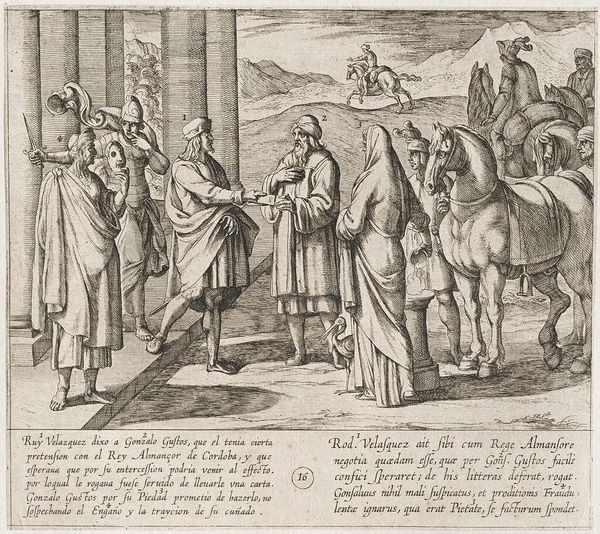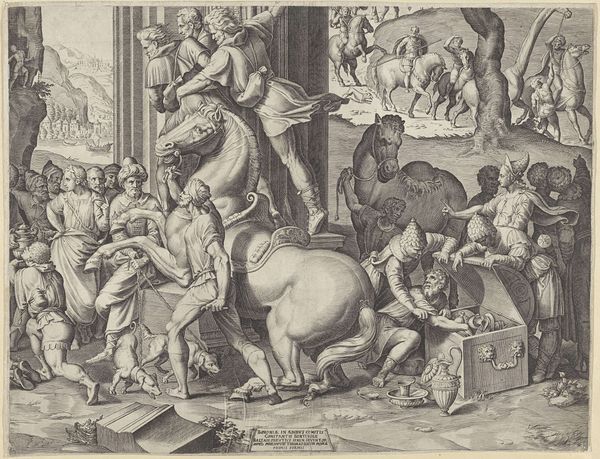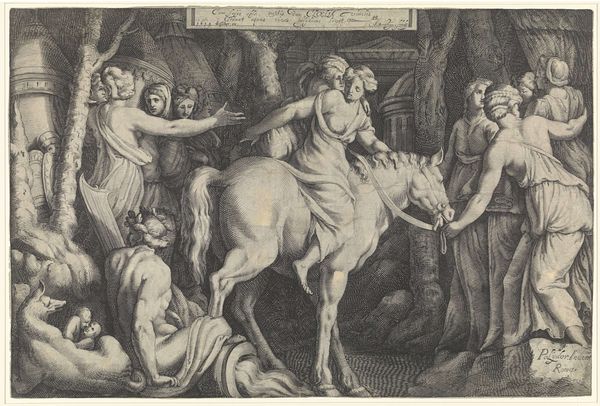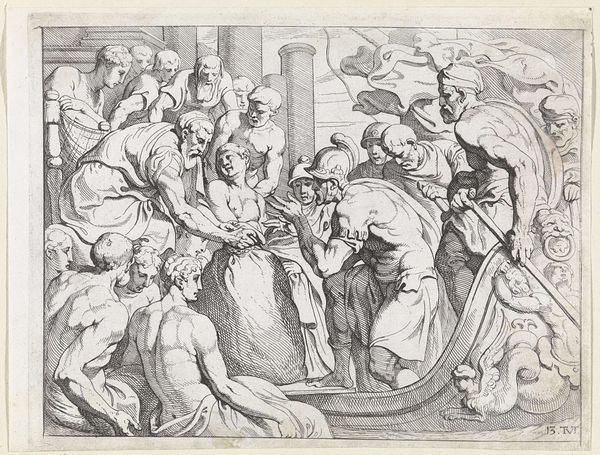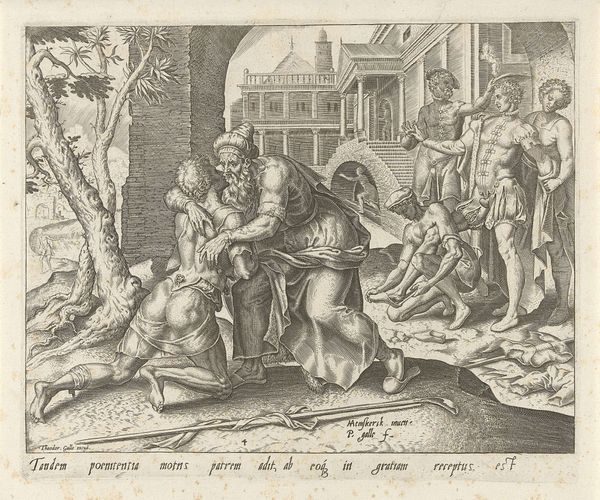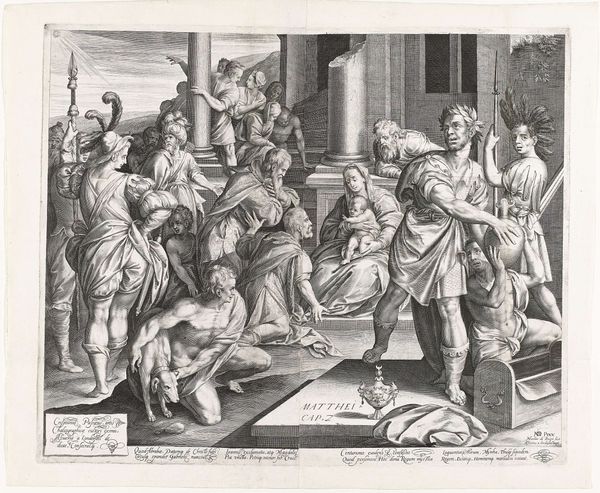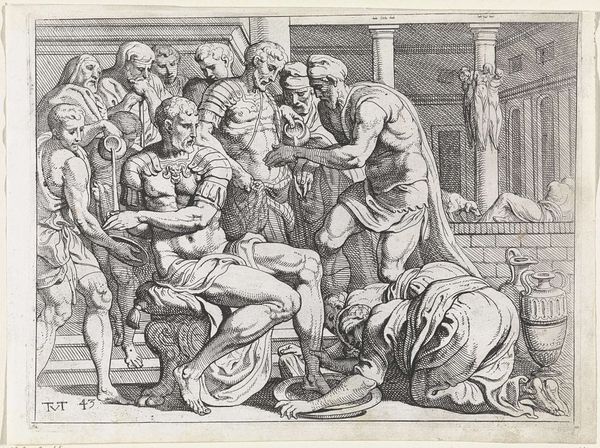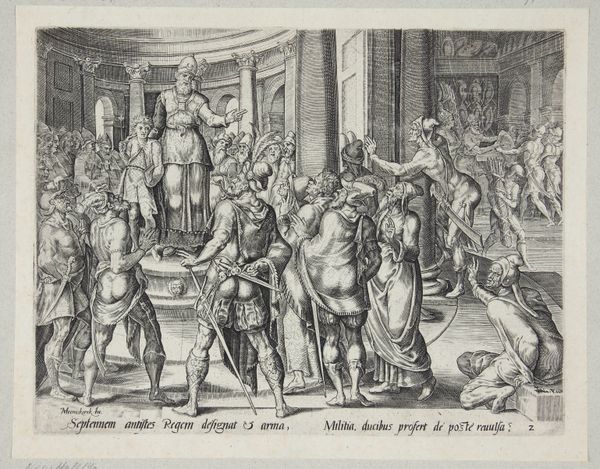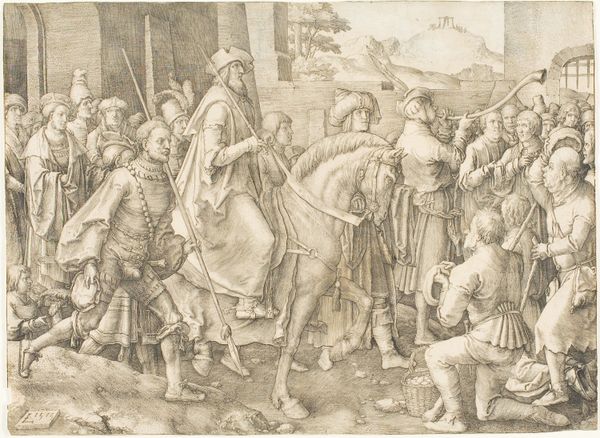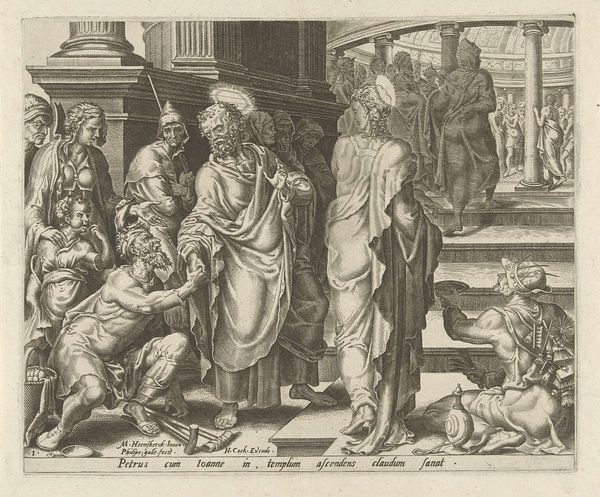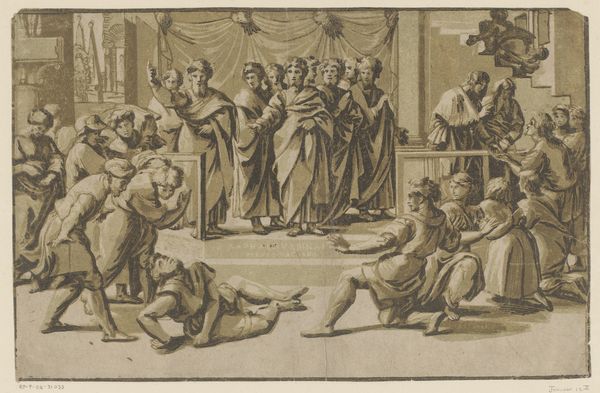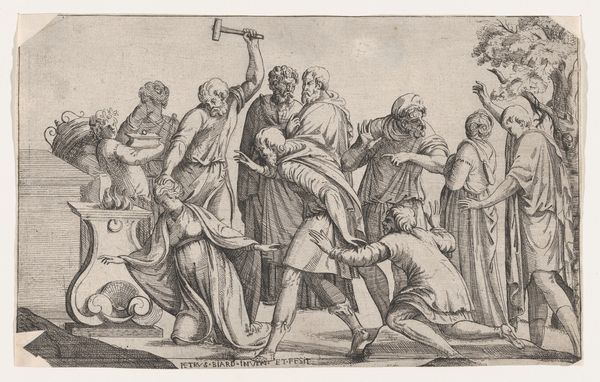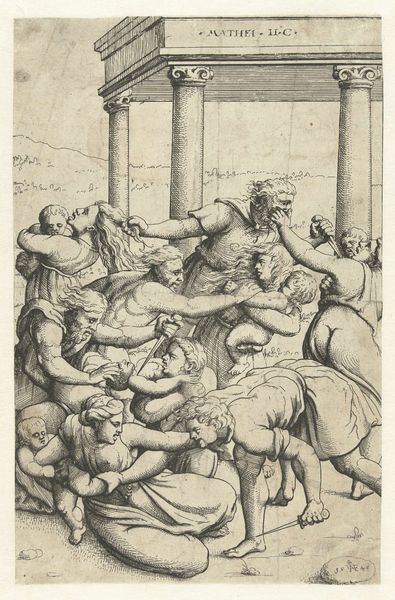
print, relief, marble, engraving
# print
#
relief
#
figuration
#
ancient-mediterranean
#
history-painting
#
marble
#
italian-renaissance
#
engraving
Dimensions: height 201 mm, width 402 mm
Copyright: Rijks Museum: Open Domain
Curator: This marble relief, dating back to somewhere between 1553 and 1585, presents a procession with sacrificial animals. It's currently housed right here at the Rijksmuseum. Editor: My first thought is… orderly. Everyone's in line, doing their part. Even the animals look resigned. A bit monotonous, maybe? Though those robes, with their repeated folds, give the eye something to follow. Curator: Exactly! Order was key in conveying power and civic virtue. The relief style itself—its flattened perspective—reinforces this sense of staged formality. Notice the repetition of the figures, almost like a frieze. How does this relate to the artwork being part of the Italian Renaissance yet referencing ancient times? Editor: The ancients perfected this serene detachment, didn't they? Makes you think of Roman triumphal arches and that calculated glorification of empire. There’s something chilly about it, a very public display absent of, dare I say, humanity. The figures are stylized and feel part of the ritual, it makes me reflect upon their place in society. What purpose does a single human have in comparison with society in general. Curator: Indeed. But also recall the Renaissance rediscovery of classical ideals, not just politically but artistically. The engraving technique, reminiscent of ancient Roman friezes, shows the Renaissance obsession with emulating classical art styles to grant renewed civic pride. It attempts to elevate society with ancient traditions to provide cultural status. Editor: Interesting. That actually makes me appreciate the piece more. The artist wasn't just carving pretty figures. He was making a very deliberate statement about civic identity and a historical period’s relationship to the power of representation. It makes you appreciate its place within time. Curator: Precisely. Its cold perfection belies a complex engagement with history and power—even if its lack of immediate emotion puts some off. It attempts to revive what came before to create something entirely new. Editor: Well, I came around. Initially I just saw an uptight procession. Now, I see a complex reflection of societal structure and artistry trying to place itself in a grand cultural continuum. I suppose the march continues.
Comments
No comments
Be the first to comment and join the conversation on the ultimate creative platform.
